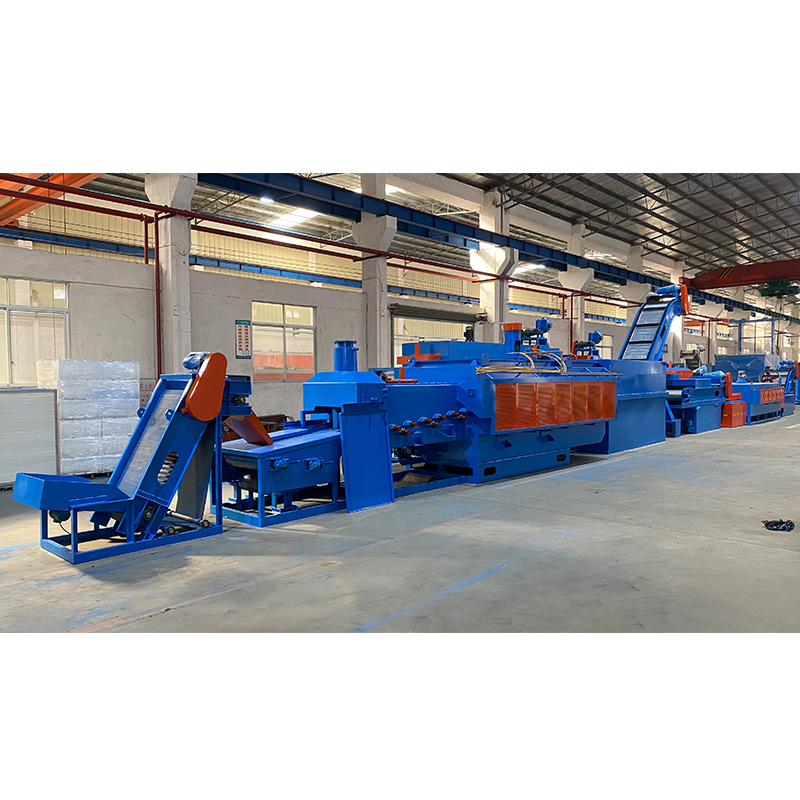How to select a heat-treatment furnace for the quenching of small-batch screws
Apr. 07, 2025
For small-batch screw quenching, it is recommended to choose box-type resistance furnaces or well-type gas carburizing furnaces. If higher precision and automation are required, vacuum quenching furnaces or mesh-belt quenching furnaces can be considered. Below is a detailed analysis and recommendations:
1. Recommended Equipment Types
Box-Type Resistance Furnace
Features: Simple structure, easy operation, high temperature control accuracy, suitable for small-batch, multi-variety screw quenching.
Applications: Suitable for quenching screws made of carbon steel, alloy steel, etc., especially in scenarios requiring high surface quality.
Advantages: Lower cost, easy maintenance, suitable for small and medium-sized enterprises or laboratories.
Well-Type Gas Carburizing Furnace
Features: Quenching can be performed under a protective atmosphere, reducing oxidation and decarburization, and improving the surface hardness and wear resistance of screws.
Applications: Suitable for screws requiring surface hardening, such as high-strength screws in the automotive and machinery industries.
Advantages: Uniform carburization, stable quenching quality, suitable for products with high performance requirements.
Vacuum Quenching Furnace
Features: Quenching in a vacuum environment avoids oxidation and decarburization, resulting in a smooth surface and excellent performance of the screws after quenching.
Applications: Suitable for quenching screws made of special materials such as stainless steel and titanium alloy, or in scenarios requiring extremely high surface quality.
Advantages: High quenching quality, minimal deformation, but higher equipment cost.
Mesh-Belt Quenching Furnace
Features: High automation, suitable for continuous production, but can adapt to small-batch production by adjusting the mesh-belt speed.
Applications: Suitable for large-batch or small-batch continuous quenching of standardized screws.
Advantages: High production efficiency, stable quenching quality, but larger equipment footprint.
2. Selection Recommendations
Based on Material
Carbon steel and alloy steel screws: Prefer box-type resistance furnaces or well-type gas carburizing furnaces.
Stainless steel and titanium alloy screws: Recommend vacuum quenching furnaces.
Based on Production Scale
Small-batch (daily output <1,000 pieces): Box-type resistance furnaces or well-type gas carburizing furnaces are more cost-effective.
Medium to small-batch (daily output 1,000-5,000 pieces): Mesh-belt quenching furnaces offer higher flexibility.
Based on Budget
Limited budget: Box-type resistance furnaces offer the best value for money.
Adequate budget: Vacuum or mesh-belt quenching furnaces provide higher-quality quenching results.
3. Key Considerations
Temperature Control: Ensure uniform temperature and high control accuracy in the quenching furnace to avoid uneven hardness after quenching.
Quenching Medium: Select an appropriate quenching medium (e.g., oil, water, polymer solution) based on the screw material to minimize deformation and cracking.
Tempering Treatment: Post-quenching tempering is necessary to eliminate internal stresses and improve screw toughness.
Safety Precautions: Pay attention to high-temperature protection during furnace operation to prevent burns or fire accidents.
4. Summary
For small-batch screw quenching, box-type resistance furnaces are the most cost-effective choice, suitable for the quenching needs of most carbon steel and alloy steel screws. If higher surface quality or special material processing is required, well-type gas carburizing furnaces or vacuum quenching furnaces can be considered. Choose the appropriate equipment type based on specific production scale and budget to ensure quenching quality and production efficiency.










